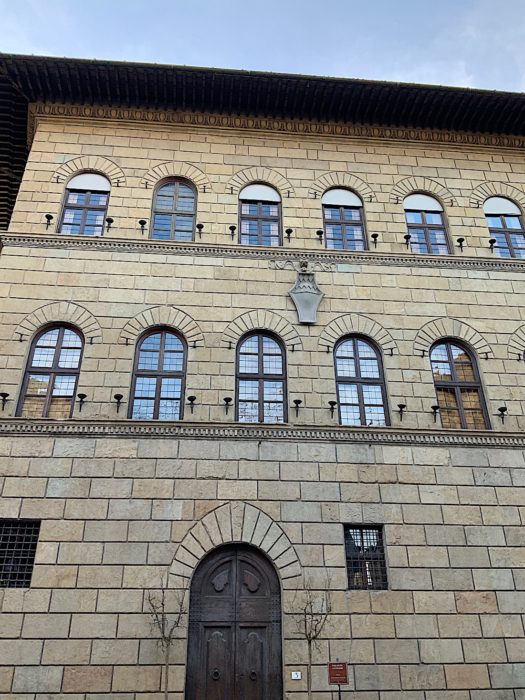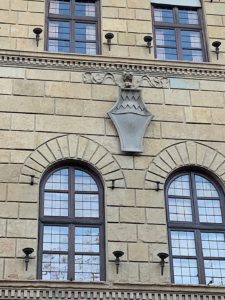
Age
XV-XVI centuries
Designers
Giuliano da Maiano, Baccio D'Agnolo.
The Palazzo Antinori is located in Piazza Antinori and is a typical example of a Florentine fifteenth-century building. According to the historical sources, the construction took place over the years 1461-63 and 1469-1472 probably on a project of Giuliano da Maiano. The palace was built for Giovanni Boni; the Boni family sold the property which was purchased in July 1475 by Lorenzo il Magnifico and immediately resold to Carlo d’Ugolino Martelli. In 1506, the property passed to the Antinori family, still today owners of the building. In the second decade of the sixteenth century the Antinori promoted the works on the garden and on the rear façade of the building, attributed to Baccio d’Agnolo (probably the works ended later, between 1584 and 1591). Over the centuries the building passed to different owners and it was subjected to modifications and restorations: in the eighteenth century it was enriched with stables and throw-in on the Via delle Belle Donne side; in the twentieth century the building was subjected to important restoration that led to the reopening on the front of the windows buffered in the eighteenth century and the recovery of the courtyard. A further intervention was made in the twentieth century and the external and internal façades were restored. Since 1957 the Antinori family, famous for its wine production, is again the owner of the building; the sale of the wine is still evidenced by a small window open on the Vicolo del Trebbio: from this the bottles were sold, as specified by the word “Vino” on the frame. The palace displays a façade having smooth ashlars divided by elegant cornices in two floors of arched windows, covered by a gutter of strong overhang; in the center is visible a stone coat of arms of the Antinori family. Inside the palace, there is an elegant courtyard with portico on three sides; this has cross vaults and round arches on Pietra Serena Sandstone columns with composite capitals, and with a loggia on the second floor; inside the courtyard there is a well in Pietra Serena Sandstone, necessary for the private supply of water to the residents of the building. In the garden the nymphaeum with a statue of Venus is from the eighteenth century.
The palace has a façade showing smooth ashlars in Pietraforte Sandstone. The coat of arms is in Pietra Serena Sandstone. The courtyard has a portico with columns and a well in Pietra Serena Sandstone. The statue of Venere in the garden is in Marble.
